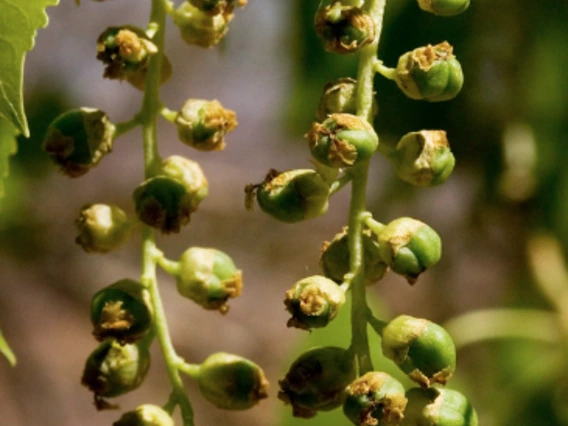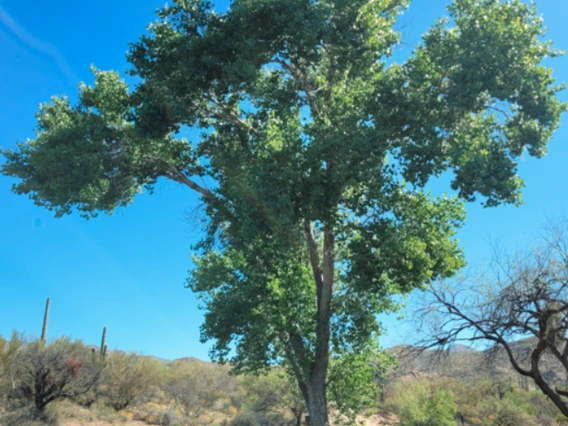Family: Salicaceae
Compound: Pop fre
Synonyms: Populus deltoides var. fremontii
Geographic Origin: western US, northern MX
Characteristics: A large, fast-growing deciduous tree that can reach heights of up to 30.5m (100ft). It has a broad, open canopy and a thick trunk, or sometimes multiple trunks, with thick, deeply furrowed gray bark. The leaves are broad and vaguely heart-shaped with a crenate-serrate edge except near the tip. They are bright green in color, turning yellow in the fall before dropping to the ground. These leaves are typically 7.6-10.15cm (3-4in) long, with a distinctive flattened petiole that causes them to shimmer in the wind. Fremont cottonwood blooms in early spring, producing catkins followed by fluffy cotton-like seeds that disperse widely in the wind.
Natural History: Populus fremontii thrives along riverbanks, floodplains, and other moist habitats in its native range, making it an important species for riparian ecosystems. Favored by large birds of prey for nest building due to height.
Cultivation Notes: Fremont cottonwood is best suited to large open spaces due to its size and extensive root system, which can be disruptive to nearby structures if not properly managed. It requires ample water, particularly in drier climates, making it ideal for areas near water sources. It prefers full sun and can tolerate a variety of soil types. Due to its rapid growth rate, it is often used for quick shade or as a windbreak.
For general plant propagation information, click here
Ethnobotany: The wood of Fremont cottonwood is soft and has been used historically for carving and making crates. The tree is also valued for its ecological role in supporting wildlife; its canopy provides habitat, and its catkins are a source of food for birds and small mammals.
Citations:
U.S. Forest Service. Retrieved April 30, 2024.
SEINet Arizona – New Mexico Chapter. Retrieved April 30, 2024.







